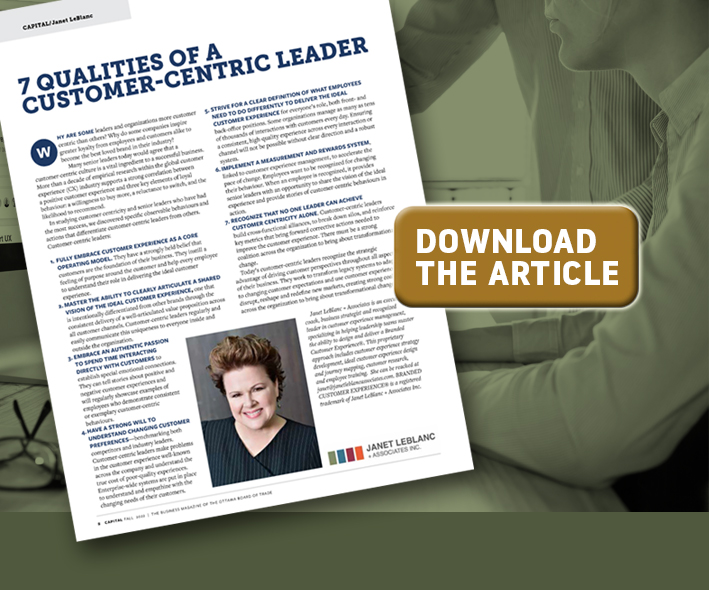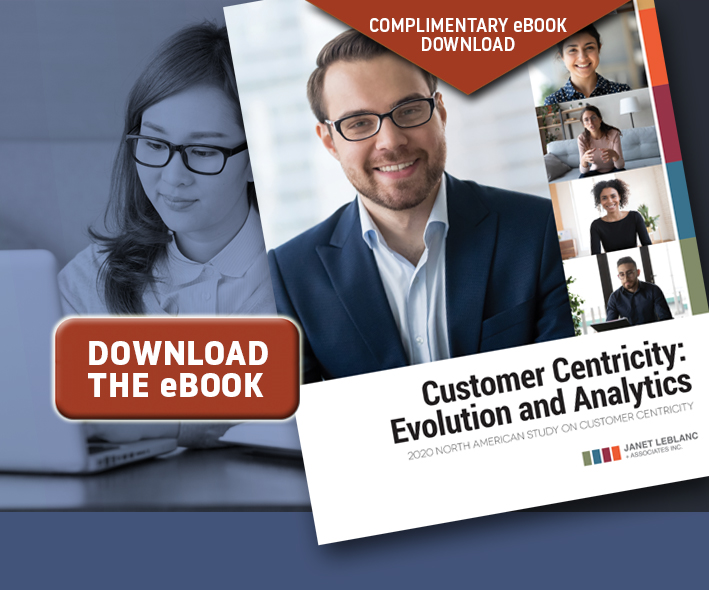Learn more about how customer-centric organizations and leaders connect with customer perspectives and put the customer at the centre of everything they do.
A Proven Framework for a BRANDED CUSTOMER EXPERIENCE®
Janet LeBlanc is an award-winning business strategist, keynote speaker, and leading authority in the area of customer centricity. She coaches C-suite executives and senior leaders on how to use customer-centric strategies to transform how they interact with customers to improve business results. Janet and her team work with Fortune 100 companies and public sector institutions to design and deliver a consistent, intentional customer experience—one that delivers on the brand promise at every interaction.
Branded Customer Experience® is a registered trademark of Janet LeBlanc + Associates Inc. All rights reserved.

Services
Customer experience leaders are those who have mastered the ability to intentionally design and consistently deliver a Branded Customer Experience®. Janet LeBlanc + Associates coaches leadership teams wanting to realize the competitive advantages created by a customer centric culture.





